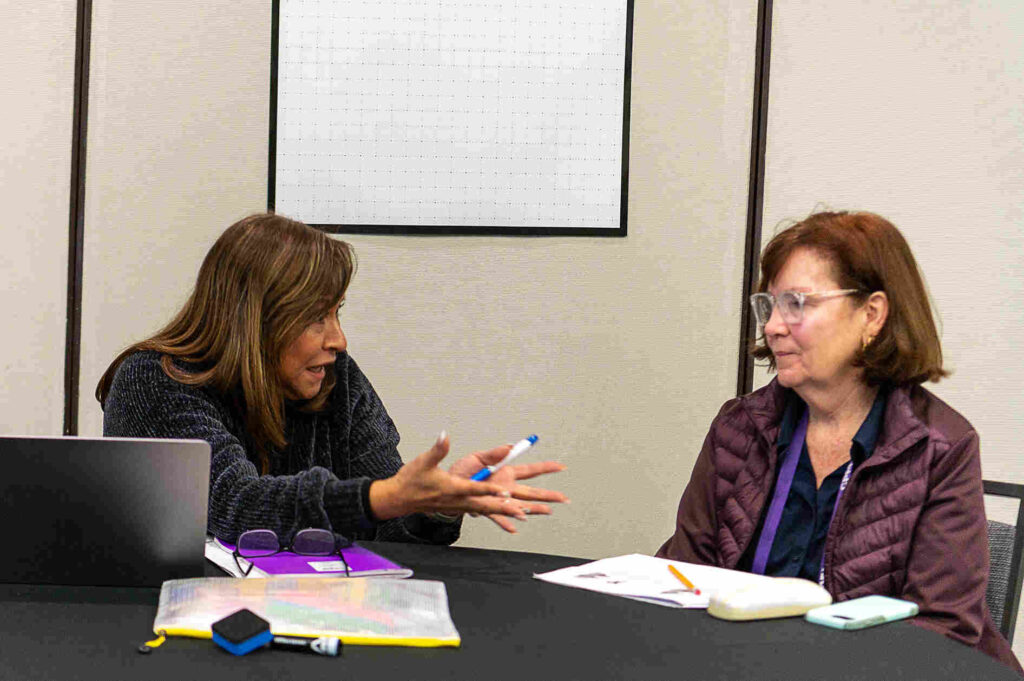
How many times have we found an exciting, equitable, student-centered strategy to try with our learners, just to find ourselves feeling like the poor cake in a Pinterest Fail? Many. So many. But how willing are we to share our attempts with others, like those who are posting to Pinterest? Through the knowledge and experiences of our colleagues, we grew to recognize one important ingredient in our recipe for ideal instruction: Transparency is the key to any successfully implemented instructional strategy.
Learners in well supported communities—ones conducive to productively struggling daily on relevant, rich tasks—recognize that their brain grows through struggle (Sangiovanni, 2020). While there is a plethora of research to support this statement, the realities of the classroom often create barriers that are difficult for us, as educators, to overcome.
Differentiate the strategies, not the task
Gradually, we recognized that our particular focus on differentiation needed to shift. We decided to let our learners know that they all are capable of pursuing team-worthy tasks (Hammond, 2015). Instead of differentiating the task, we differentiated the instructional strategies and the thinking. In doing so, we shared with the learners about the decisions we made as teachers. When asking them to complete independent thinking time at the start of a problem, for example, we promoted the idea that math is not about speed. When allowing them to talk before independent time, we let them know we need each other (not just the teacher) to generate initial ideas about things we have never heard of before. When asking students to talk about a task, we let them know that sentence frames can help us gather rough draft thoughts into coherent ideas to share. When learners conduct any student-centered strategy, we let them know that we are all mathematical thinkers and our classmates can help us revise our rough draft ideas over time.
Measure Your Impact
But, with the best of intentions, we were often unable to measure the impact of instructional choices. Again, we relied on colleagues to support our professional growth. We must not just plan and implement strategies to support learners through the struggles of problem solving in rigorous tasks; we need to measure the efficacy of our student-centered strategies. We were comfortable asking learners to assess the math learning target, but we had never asked them to assess the impact of a student-centered strategy. How vulnerable, even terrifying, it seemed to allow students to gain insight into our own pedagogical content knowledge! Our colleagues reminded us that the vulnerabilities and risk taking expected of our learners should be extended to us as well. Plus, we did not want to feel like Fail Cakes again—we needed feedback from our most important audience!
Our colleagues recommended setting a goal, which we decided was to increase opportunities for learners to share their perspectives while feeling respected during Math Chats. We selected Math Chats because of the significant empowerment opportunities for learners. Each one promotes visual representations, unique strategies, rich discussions, flexibility, and fluency. Math Chats provide opportunities to equitably revise, restate, and refine our understanding of many different topics. To help anticipate the intended impact, we created a “Looks Like–Sounds Like–Feels Like” graphic organizer where we envisioned students working at a vertical workspace sharing ideas about equivalent expressions. Visual gestures are being utilized to acknowledge agreement or push for clarifications. It sounds like students making statements like, I heard [Name] say ______. That made me think _____. Questions are asked freely, most of the time without any signal from the teacher. Learners are repeating, rephrasing, and adding on to previous statements as the norm instead of just when prompted by the teacher.
When we thought about the “Feels Like” part, the term “learners” shifted to “my” without our initial awareness. I recorded:
+ My classmates will benefit from what I have to say.
+ My classmates know that I won’t look them directly in the eyes, instead using hand gestures and other signals to show my engagement.
+ My contribution helps me understand more about this math concept.
+ My classmates benefit from my contributions, as well.
This was a powerful moment as we realized that, while we could measure the efficacy of some parts of student-centered strategies, we needed the learners to provide feedback on the impact described in the “my” statements. We decided that surveying learners over a three-week period might allow for the most effective feedback and measure the efficacy of implementing Math Chats. We wrote these two questions:
+ How effective are the Math Chats that you experience during math class?
+ What impact does it have towards your feelings of respect?
Try it Out!
This process is still very much anecdotal, meaning it is two personal accounts replicated very few times with learners. We are relying on all of you and your classrooms of learners to continue this shift toward measuring efficacy. If you are interested, you might share your successes and challenges with us. What instructional strategy might support your learners? What might it look, sound, and feel like for your learners? How will you empower them to provide feedback on your selected strategy?
No, you don’t have to post all of your most vulnerable moments on Pinterest. However, we do encourage you to get comfortable sharing about your struggles with your colleagues. Over time, you’ll also be able to share the successes of your experience guiding your learners towards productive struggle each day.
Hammond, Z., & Jackson, Y. (2015). Culturally responsive teaching and the brain: Promoting authentic engagement and rigor among culturally and linguistically diverse students. Corwin, a SAGE Company.
SanGiovanni, J. (2020). Productive math struggle: A 6-point action plan for fostering perseverance. Corwin.

Jeremiah Morgan & Jocelyn Dunnack
jeremiahmorgan@cpm.org (Eagan, MN)
joceylndunnack@cpm.org (Columbia, CT)

